Review: Latorca InterCity Train Mukachevo to Budapest
This review details my experience on board the “Latorca” InterCity train which connects Mukachevo in Ukraine with Budapest in Hungary.
From Ukraine to Hungary
After a beautiful train ride across the Carpathian Mountains, I had finally arrived in south-west Ukraine in the city of Mukachevo.
Although this historic city is reportedly well-worth visiting, I sadly didn’t have time to explore the town as I needed to turn back home.
At Mukachevo, I would connect to the “Latorca” InterCity train towards Budapest, the capital of Hungary.
This train is named after the River Latorica, which is called Latorca in Hungarian.
You will find this train under train number IC 34 in the timetables when it runs from Budapest to Mukachevo, and as IC 33 on the return journey from Ukraine to Hungary.
I had just over three hours until the departure of the Latorca train, which left plenty of time to buy my ticket and find a place to drink a coffee.
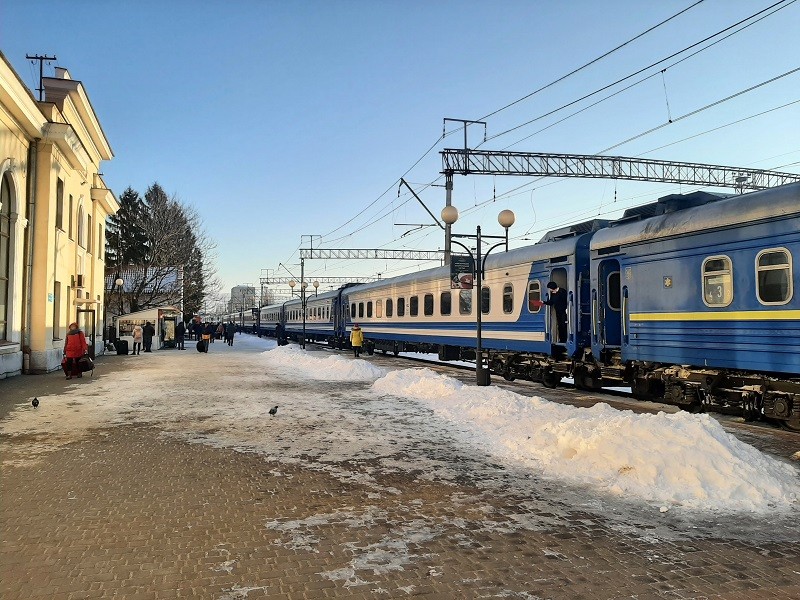
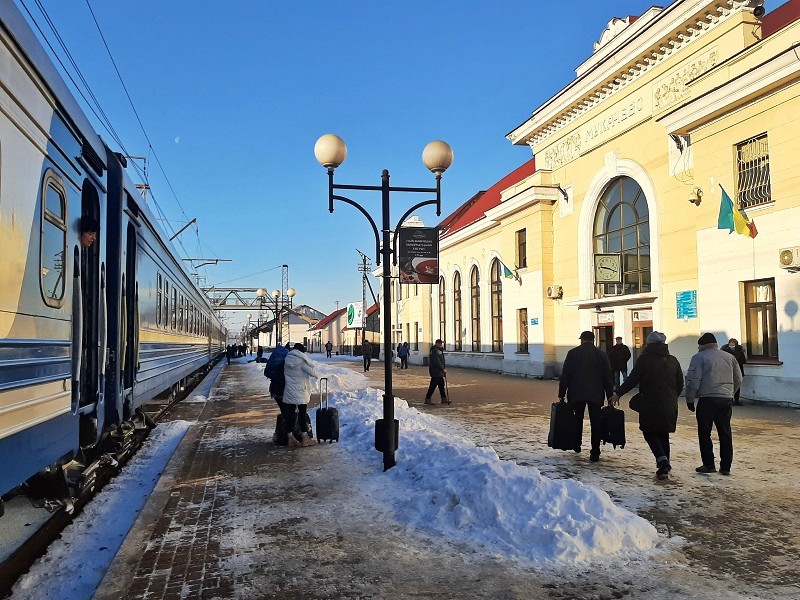
Buying my ticket
Although you can book domestic Ukrainian trains and a couple of international trains online at the website of the Ukrainian Railways, the Mukachevo to Budapest train isn’t one of them, so you have to buy your ticket at the station.
This was easily done on arrival in Mukachevo from one of the ticket windows inside the main hall of the train station.
For my 2nd class ticket from Mukachevo to Szolnok (a town just before Budapest) I paid 701 Ukrainian hryvnia (€22), which included a reserved seat.
Do note that although you have to buy your ticket at the main station building of Mukachevo, the train towards Hungary actually departs from a different location called the “Western Platform” some 500 metres (0.3 mile) away.
Therefore, you should make sure to leave enough time to walk between the main station and this remote platform.
As there are no facilities at the western platform and just a single open-air bench, I however wouldn’t recommend walking there too early, especially not in winter.
You are better off waiting in one of the warm waiting rooms of the train station or one of the opposite cafés.
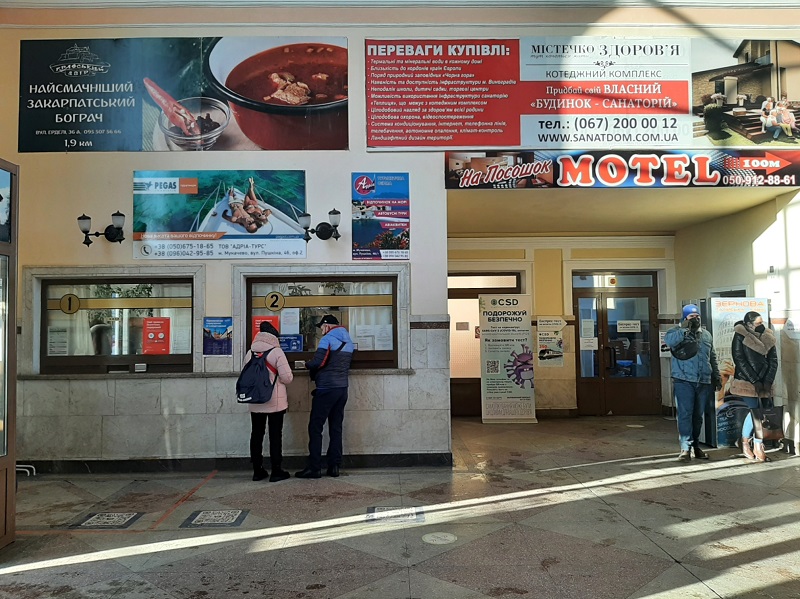
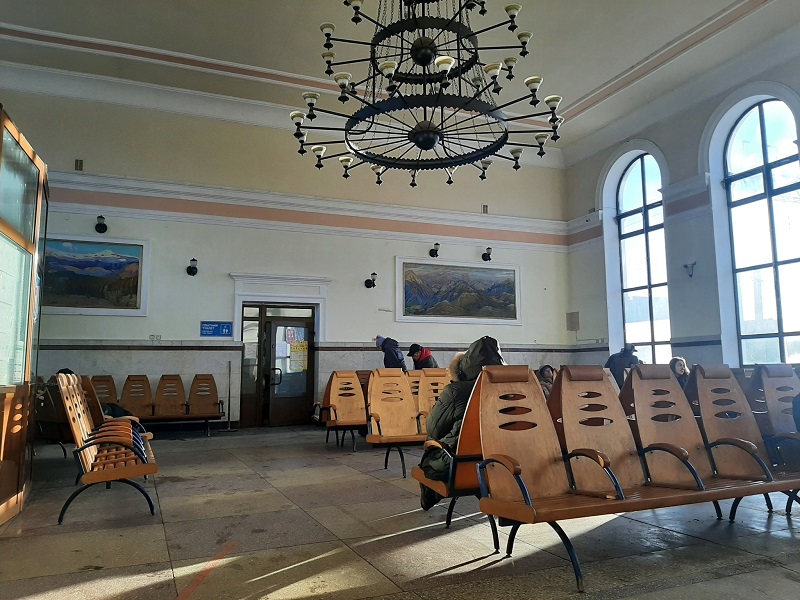
A look around Mukachevo station
After drinking a coffee at one of the cafés opposite the road, I explored the station of Mukachevo a bit more.
There are some shops as well right around the station to buy some food and drinks for the trip to Hungary – which you are well-advised to do as there won’t be any dining car on the Latorca train.
Mukachevo station has a classical façade with some interesting Soviet-era socialist statues depicting railway workers.
From a nearby pedestrian overpass, you have some nice views over the station, the railway tracks, the city of Mukachevo and the Carpathians.
It’s also a good spot to do some trainspotting if you have time to kill.
While I explored the surrounding area, I saw mostly freight trains as well as Ukrainian Railways train 38 from Odessa to Uzhhorod passing by.




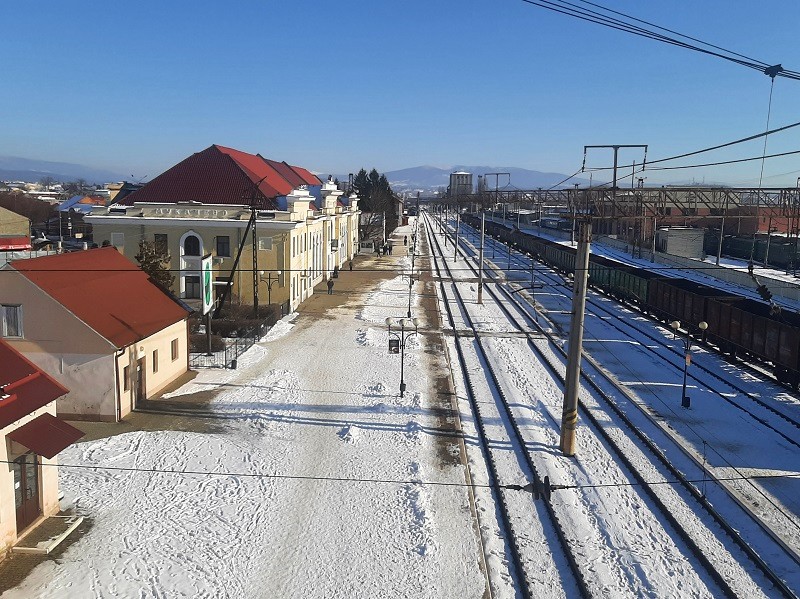
Walking to the Western Platform
It’s highly straightforward to walk from the train station of Mukachevo to the Western Platform.
The walk is well-signposted and all you need to do is basically follow the railway tracks towards the west until you encounter the Western Platform after 500 metres.
When in doubt, just ask any local for the “platforma zakhidna” as it is called in Ukrainian.
Chances are however that you might encounter a Hungarian speaker on your way to this remote platform, given that just under 10% of the population of Mukachevo is ethnic Hungarian.
Indeed, one of the main reasons why there is a direct train from Mukachevo to Budapest is because there is a sizeable Hungarian minority in this part of Ukraine.
For what it’s worth, the city of Mukachevo is known by the name of Munkács in Hungarian and “nyugati peron” means Western Platform.



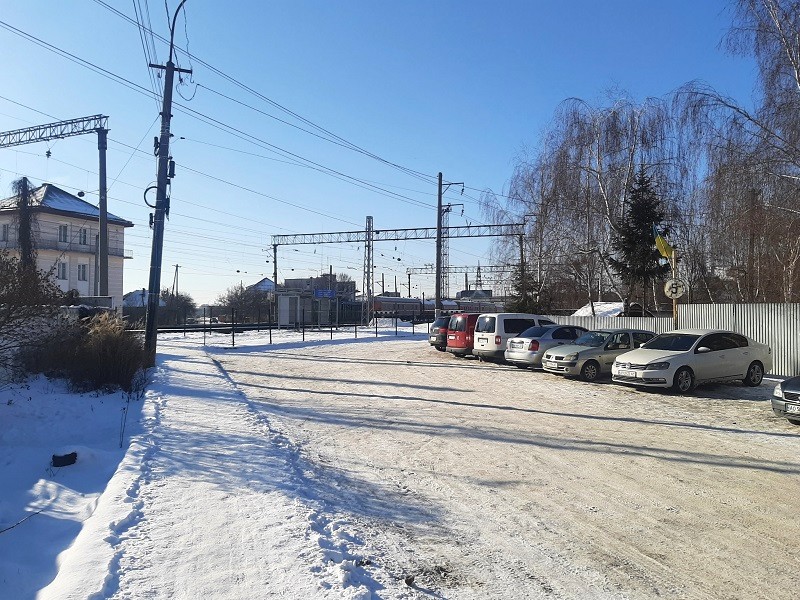
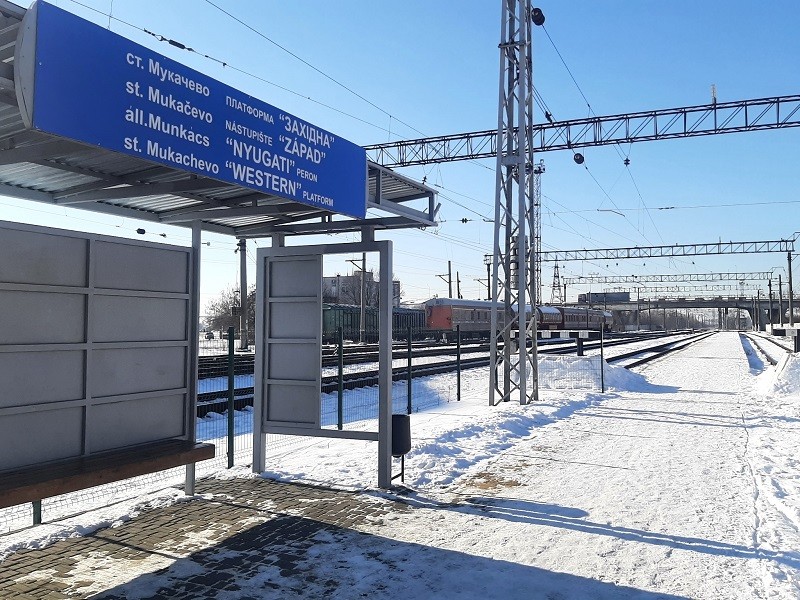
The Latorca arrives
The reason why the Latorca train uses the remote Western Platform is because this is the only part of Mukachevo station where there is a standard gauge track.
In Ukraine, the railway tracks are broad gauge while Hungary uses standard gauge.
This means that if a train was to ride from deeper inside Ukraine to Hungary (such as the Kyiv-Budapest-Vienna night train) it must have the bogies (wheelsets) of each wagon changed to overcome the difference in railway gauge.
It’s a time-consuming process which adds considerably to the total duration of travel.
Because of this, some standard gauge tracks have been built from Mukachevo to the border between Ukraine and Hungary, as well as to the border between Ukraine and Slovakia.
This allows normal Hungarian trains such as the Latorca to travel all the way from Budapest to Mukachevo on standard gauge tracks without the need to change the bogies.
After waiting some 15 minutes in the cold, the Latorca InterCity train was finally shunted from the sidings towards the platform.


On board the Latorca
At the start of the journey in Mukachevo, the Latorca InterCity only consisted out of two second class wagons and a locomotive, although more carriages would be added to the train during its first stop in Hungary.
There were about 20 or 30 or so other passengers boarding the Latorca train in Mukachevo.
The Latorca uses standard Hungarian rolling stock in the blue-and-white colours of MÁV, the Hungarian State Railways.
The second class InterCity wagons have perfectly comfortable seats in a 2-2 configuration, with some of these seats being arranged in a bay of four around a table.
Although there are power sockets at all seats, the Latorca train is not equipped with WiFi internet.
Luggage can be stored on the overhead racks or underneath the seats.
Although the toilets on the train were fairly basic they were clean.



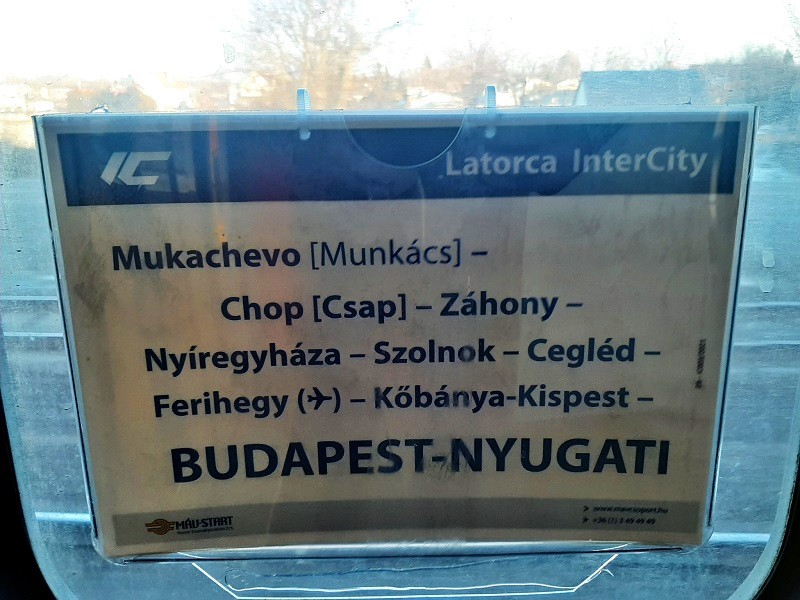
Latorca InterCity train Mukachevo to Szolnok
Train IC33 – Departure: 12.30pm – Arrival: 5.20pm
Duration: 5h50m – Distance: 283 kilometres
Costs: €22

Departure
The Latorca departed Mukachevo on time for its 384-kilometre ride to Budapest in Hungary.
If you sit on the right-hand side upon departure from Mukachevo, you have some nice views of the hilltop Palanok Castle.
The ride from Mukachevo to the first stop at the station of Chop is rather nice as there are some distant views of the Carpathian Mountains if you are seated on the right side of the train.



Chop
The Ukrainian border station of Chop is a major railway interchange as there are lines east to Mukachevo, north to Uzhhorod, west to Slovakia and south into Hungary.
At Chop, border guards will board the Latorca InterCity train to check passports – you simply remain on board while this is done.
Chop used to have an amazing Soviet mural in the main station hall, although this has sadly been covered up with bright yellow paint.
I can certainly understand (and support) the de-Sovietisation drive going on in Ukraine, but from an aesthetical point of view they really turned a historic mural into something that is downright ugly.
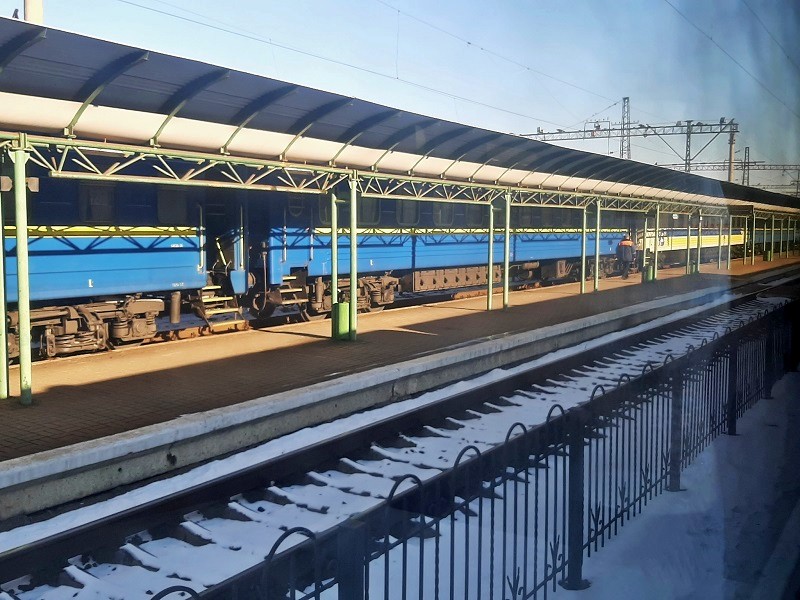

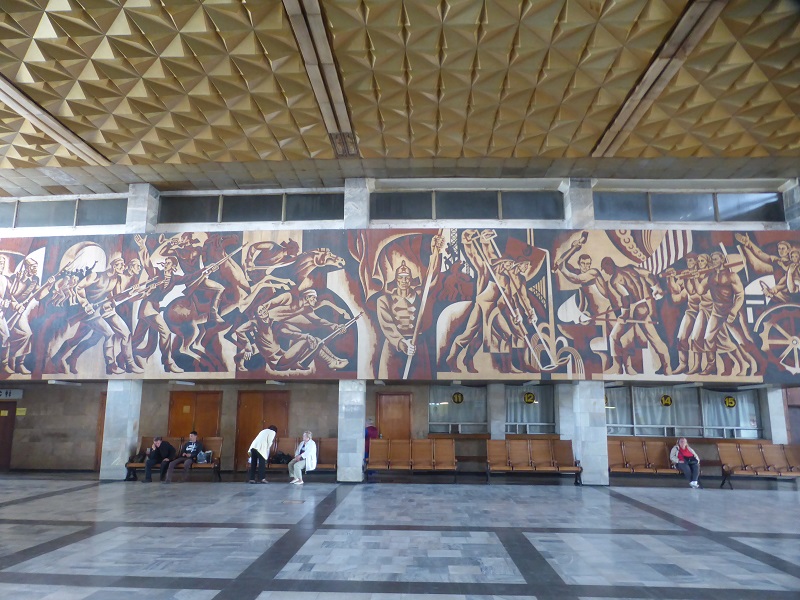
Chop has 2 stations which previously were domestic and international.
It appears that everything is now consolidated into the domestic station.
Last time I was here though was over 10 years ago! pic.twitter.com/WA8L2bMuLn
— AndyBTravels (@AndyBTravels) September 4, 2021
Crossing the border
After a 30-minute wait at the border station of Chop we could continue our way across the border into Hungary.
When the train rolled out of the station, I walked towards the rear end of the train so I could shoot a video of the moment that the Latorca train actually crosses the Ukrainian-Hungarian border.
Here, the River Tisza forms the border between Hungary and Ukraine, with the Ukrainian border town of Chop being located north of the river and the Hungarian border town of Záhony on the south side.
It was the second time in a week that I crossed the River Tisza, as the same river forms the Ukrainian-Romanian border upstream between the towns of Solotvyno and Sighetu Marmației.
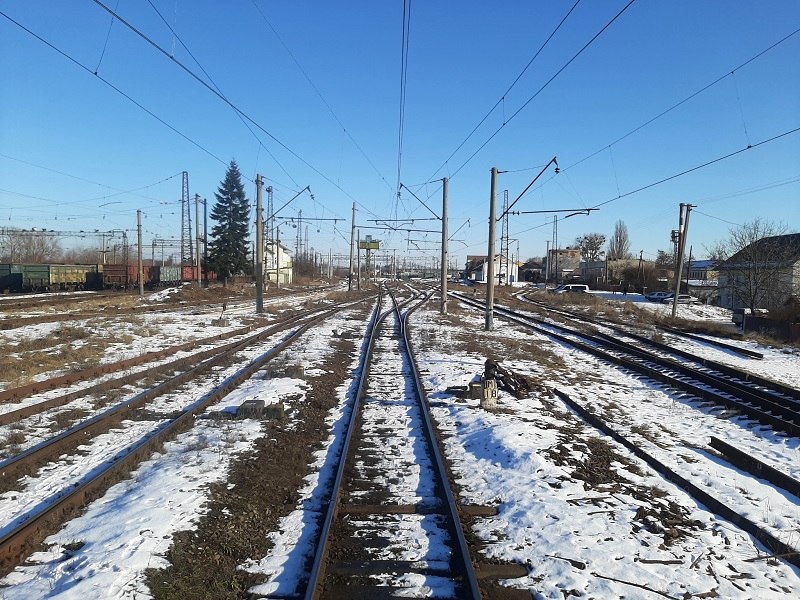


Záhony
The border procedure at Záhony was exactly the same as you can just remain on board while the border guards check your passport.
If you carry a lot of luggage or somehow look suspicious, they might do a customs check as well, otherwise they’ll likely only ask whether you carriage alcohol or cigarettes with you.
The stop at Záhony took much longer than the one at Chop, which isn’t surprising given that you are entering the EU’s Schengen Area at an external border.
At Záhony, a couple of more wagons with unreserved second class seating are added to the Latorca InterCity train, which also takes some extra time.
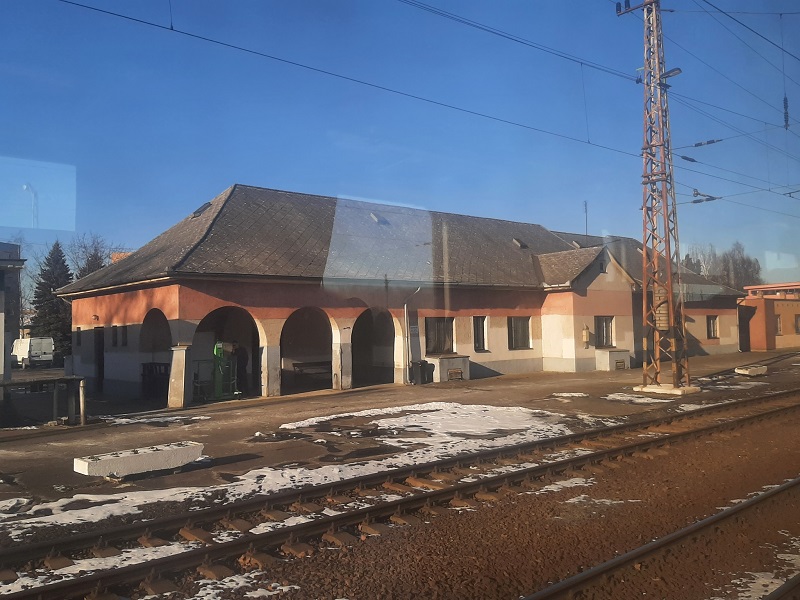

From Záhony to Debrecen
As you travel from Záhony to Budapest you ride across the Great Hungarian Plain known as the Puszta.
The Puszta is one of the most unremarkable landscapes in all of Europe as there is nothing to see from the window besides endless fields and flatlands.
It made for a great moment to crack a beer and some crisps and to try to get some work done on my laptop.
About one-and-a-half hour after departure from Záhony we arrived in Debrecen, a major university town and the largest city we would call at between Mukachevo and Budapest.
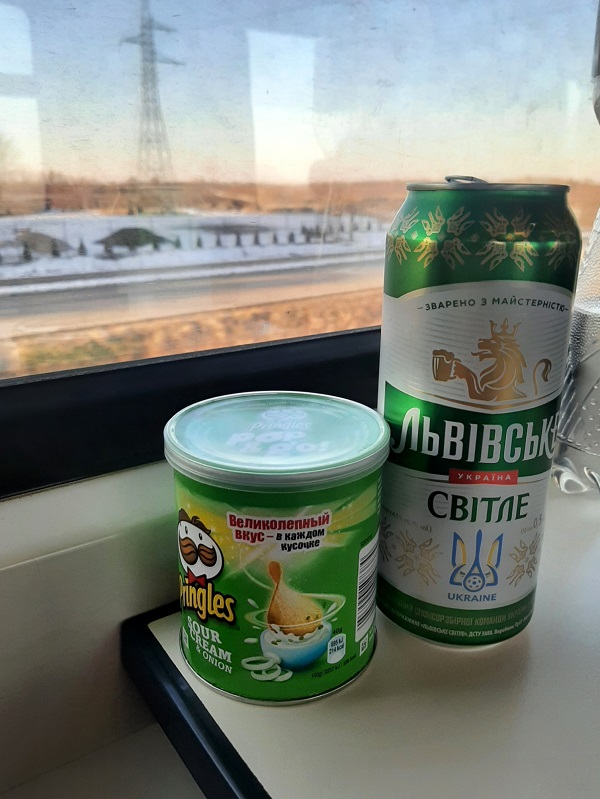




Püspökladány
Another important stop for the Latorca train is Püspökladány.
Although only some 15,000 people or so live in Püspökladány – the town is a major railway interchange.
You can change at Püspökladány for trains towards the Biharkeresztes, the Hungarian border station with Romania on the railway line towards Oradea and Cluj-Napoca.

Szolnok
Although I was heading towards Romania as well, I however got out of the train at the next stop in the city of Szolnok.
I would change at Szolnok for the Ister night train towards Sibiu, Brasov and Bucharest in Romania.
Fortunately we arrived spot on time in Szolnok, leaving me with plenty of time to head into town to find a restaurant for dinner before the departure of my sleeper train.


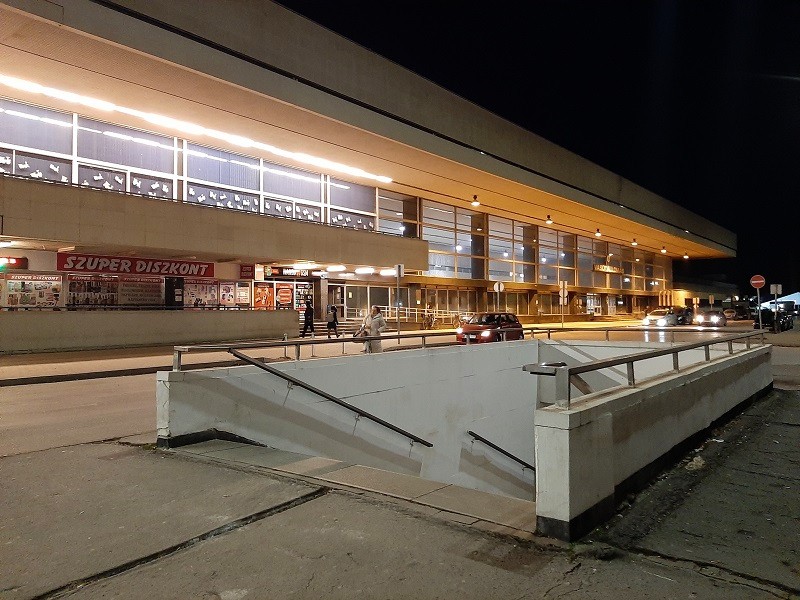
Onward to Budapest
After the stop in Szolnok, the Latorca InterCity train continues towards its final stop of Budapest.
The Latorca train terminates at the station of Budapest Nyugati in the heart of the Hungarian capital.
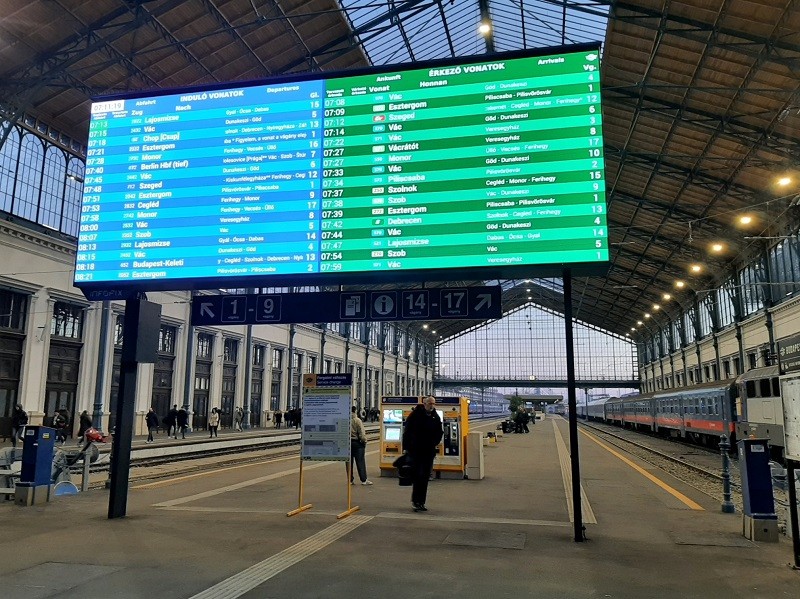
Conclusion
I had a perfectly fine ride from Ukraine into Hungary on the Latorca InterCity train.
The Latorca train, which links Mukachevo and Chop in Ukraine with cities in Hungary such as Debrecen, Szolnok and Budapest, is a cheap way to travel between the two countries as a 2nd class ticket only costs around 25 euro.
Seating on the train is second class only, although the Hungarian InterCity wagons are perfectly comfortable and there are power sockets to keep your phone or laptop charged.
The only downside of taking the Latorca train is that the ride is fairly long and boring, as the Great Hungarian Plain which you will cross is rather featureless.
Trip report index
This article is part of the ‘Mail From Mariupol: A Pre-War Trip to Ukraine by Train‘ trip report, which consists of the following chapters:
1. Review: Night Train Bucharest to Sighetu Marmatiei, Romania
2. At the Sighet-Solotvyno Border: From Romania Into Ukraine
3. Review: Solotvyno to Rakhiv by Bus
4. Review: Hotel Europa, Rakhiv, Ukraine
5. In the Land of the Hutsuls: A Visit to the Town of Rakhiv
6. Rakhiv to Mariupol: Riding Ukraine’s Longest Train Route
7. A Tribute to Mariupol: Memories of a Pre-War Visit
8. Ukrainian Railways Mariupol to Kiev Train in Platzkart
9. Review: Ibis Kyiv Railway Station Hotel
10. Review: Kyiv-Pasazhyrskyi Station First Class Lounge
11. Ukraine Night Train: Over the Mountains to Mukachevo
12. Review: Latorca InterCity Train Mukachevo to Budapest (current chapter)
13. A Short Stopover in Szolnok, Hungary
14. Review: Ister Night Train Budapest to Bucharest
15. Epilogue: Witnessing the Ukrainian Refugee Crisis at the Border

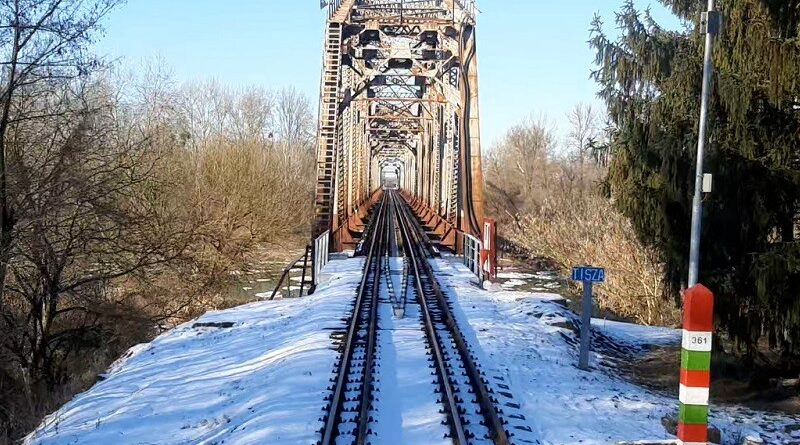
Thanks for the excellent review… my boyfriend and I (from Colombia) took this train in August 2024 from Budapest to Chop and then back again… it is impossible to find the correct times for the Hungary-Ukraine border crossing portion online… you just have to show up at the Zahony or Chop station and ask for the next one… since the border is open 24/7 it can be any time (soon or not soon!) ☺️